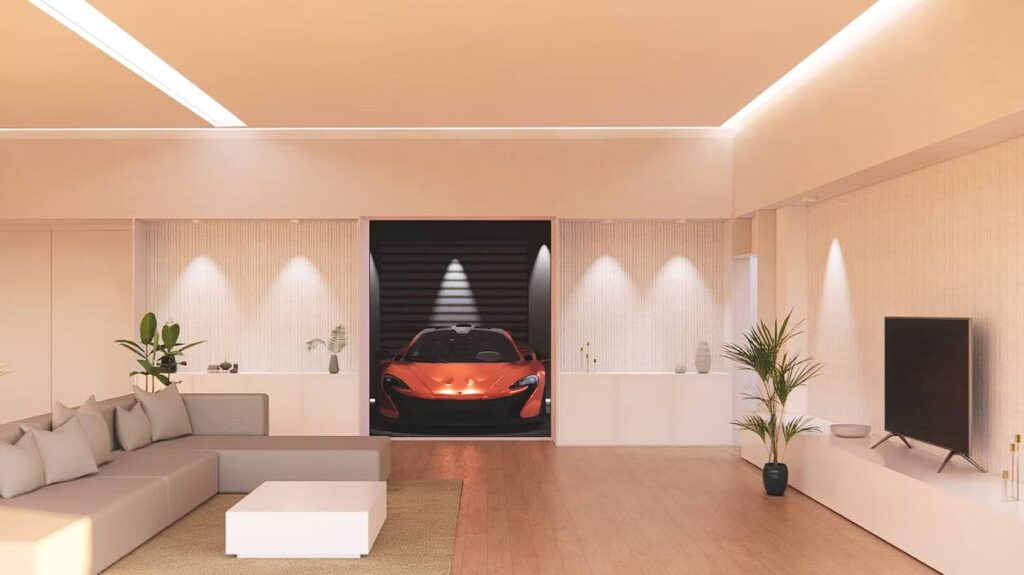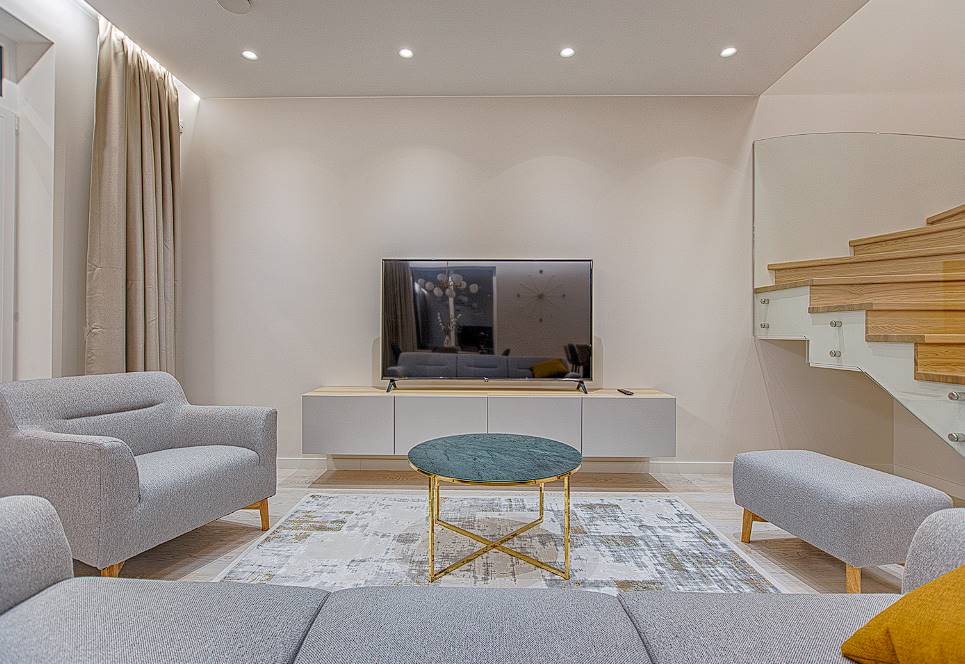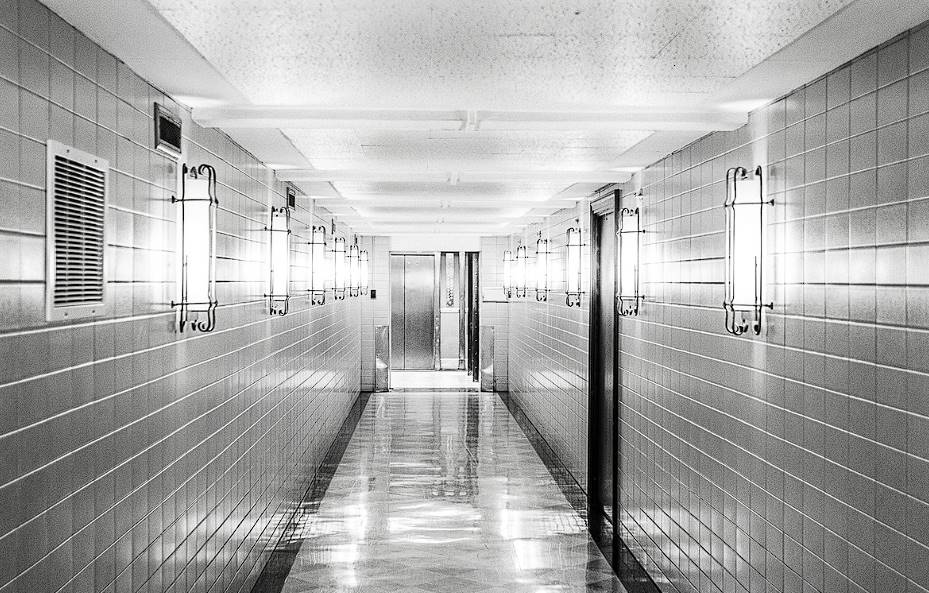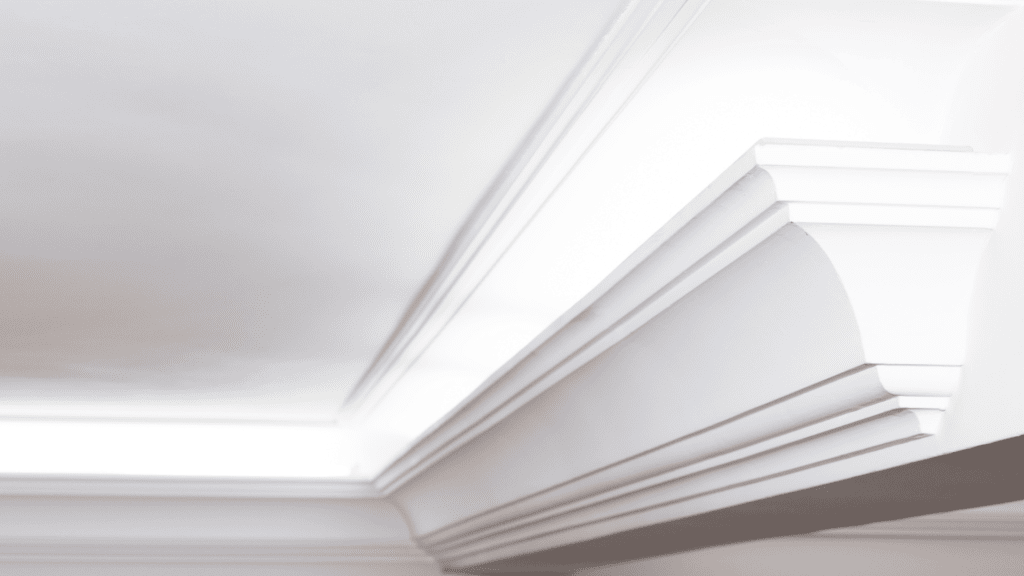Do you want to update your ceiling but need help with all the possibilities? You can choose between a dropped and suspended ceiling in many buildings. But what differentiates them? To better assist you in making a well-informed selection for your next construction project, this article will compare and contrast suspended versus dropped ceilings.
When comparing suspended and dropped ceilings, what are the key differences? The common interchangeability of the two terms leads to more clarity. However, they differ in how they are installed. To install a suspended ceiling, a grid of metal tracks is first hung from the present ceiling, and then ceiling tiles are installed into the tracks. On the other hand, a dropped ceiling has been installed at a lower point than the original ceiling, usually with a metal grid framework. This framework separates the two ceilings and secures the ceiling panels or tiles.
Said suspended ceilings are created by suspending a grid of tracks from the preexisting ceiling, whereas dropped ceilings are created by installing a grid structure at a lower level. There are bad and good points to both varieties. Due to their convenience in upkeep and repairs, suspended ceilings are commonly used in public spaces. However, dropped ceilings have superior soundproofing and insulating capabilities and are preferable when maintaining a comfortable temperature or reducing ambient noise is a priority.
These distinctions, however, touch the surface of the benefits that suspended and dropped ceilings provide. Read this full blog post to learn more about each ceiling option's features, uses, and constraints. A Famous interior designer and architectural makeover expert, Jane Smith, will also contribute her knowledge. Then, join us as we explore the differences between suspended and dropped ceilings so you can determine which type of ceiling is right for you.
Keep in mind that the ceiling affects the look, feel, and practicality of a room. Therefore, to make a well-informed decision for your next construction project, you should keep reading to learn more about the specific features and uses of suspended and dropped ceilings.
What Is A Suspended Ceiling?
To reduce the ceiling height and conceal the electrical, insulation, and plumbing services, a suspended ceiling system is typically placed as a false ceiling below the main foundation. In most cases, a metal grid framework creates a suspended ceiling, which is wired to the main ceiling above. Tiles or panels are laid above the lightweight grid. There's a wide range of materials available for these ceiling accents. For example, soundproofing can be accomplished with regular fibreglass acoustical or mineral fibre tiles, while light diffusion can be achieved using translucent tiles.

Benefits Of Suspended Ceilings
There are several advantages to having a suspended ceiling, often called a drop ceiling or a fake ceiling:
Aesthetics
Suspended ceilings may make a room look more modern and put together. In addition, they help complete a room's aesthetic by concealing unsightly pipes, ducts, and wiring.
Acoustic insulation
S suspended ceilings enhance soundproofing by preventing sound from travelling through the gaps between levels. In addition, they do a great job of reducing background noise and making the room more relaxing.
Thermal insulation
This type of ceiling creates an extra layer of air between the roof and ceiling, improving thermal insulation. This aids in maintaining a consistent room temperature while decreasing the need for either heating or cooling.
Lighting options
Suspended ceilings simplify recessed lights, track lighting, or suspended light panels. They let you play around with the lighting scheme and improve the room's atmosphere.
Accessibility
Suspended ceilings offer easy access to the area above, making maintenance and repairs of electrical and mechanical systems more convenient. In addition, they can be easily removed or lifted to access the utilities without disturbing the main ceiling.
Fire resistance
Many types of suspended ceiling materials contribute to increased safety in a fire because they are fire-resistant or have fire-rated features. They can slow the spread of fire and smoke, giving people inside more time to get out of the building.
Customization
A wide range of suspended ceiling styles, textures, and colours are available to meet any given room's aesthetic and functional needs. They can be used in various inventive ways to improve the decor of a space.
Given these advantages, suspended ceilings are frequently used in public and private buildings, including offices, classrooms, hospitals, and other medical facilities.
Several Varieties of Suspended Ceilings
Suspended ceilings can be categorised in several ways, depending on their intended purpose, the materials used, and the installation method:
- Joint suspended ceilings have a finished appearance that is similar to that of a standard ceiling.
- Suspended shapes or an open framework allow open or decorative suspended ceilings to install lighting fixtures above or below the ceiling, creating a more aesthetically pleasing effect.
- Bandraster-style panelled suspended ceilings are more adaptable since the mains and metal tees may be cut to varied lengths and put in various ways.
What Is A Dropped Ceiling?
When you glance up, do you ever wonder what's up there? A dropped ceiling is a situation where a suspended ceiling seems lower than the real structural ceiling. But what is a dropped ceiling, and why do we put them in some rooms and not others?
A dropped ceiling is a supplementary ceiling that is built below the primary structural ceiling. It is also known as a suspended ceiling or fake ceiling. It is a system of metal channels or tracks hanging from the existing ceiling in a grid pattern. These channels hold panels consisting of mineral fibre, metal, or gypsum in place to create a false floor. But why would you want to put a second layer of roofing over your head?
Dropped ceilings provide many useful advantages. In many buildings, services, including electrical wiring, plumbing pipes, and HVAC ductwork, are hidden in the gap between the original and dropped ceiling. They are also often used in public spaces like workplaces and classrooms because of their acoustic benefits. In addition, dropped ceilings are aesthetically pleasing and practical because they may conceal and conceal lighting, air ducts, and sprinkler systems.
Benefits of Dropped Ceiling?
There are several variations of dropped ceilings, each with its advantages. The primary benefits and different kinds of dropped ceilings are as follows:
- Aesthetics: Dropped ceilings make a room look more polished and put together by hiding unsightly piping, wiring, and other infrastructure.
- Easy Access: Ceilings with detachable tiles or panels facilitate maintenance and repair of mechanical systems, electrical wiring, and plumbing.
- Acoustic Improvement: The acoustics of a room can be greatly improved by installing dropped ceilings, as they increase sound absorption and decrease noise transmission.
- Thermal Insulation: The space between the regular ceiling and the dropped one can act as insulation, so lowering heat loss and increasing heating and cooling productivity.
- Lighting and Ventilation: Reduced ceiling height allows for better lighting and airflow distribution thanks to installing recessed lighting and air ducts.
Several Varieties of Dropped Ceilings
Acoustic Tiles
These ceiling tiles are meant to reduce echoes and overall noise levels by virtue of their sound-absorbing qualities.
Gypsum Board
Drywall ceilings, or plasterboard ceilings, are made of gypsum panels fastened to the dropped ceiling's metal or wooden framework.
Metal Tiles
Metal ceiling tiles are commonly utilised in commercial and industrial environments due to their durability. They're available in a wide range of sheens and may make any space more contemporary.
Fibreglass Tiles
These tiles are lightweight, fireproof, and great for dampening background noise without sacrificing safety. As a result, they find widespread application in wet environments like toilets and basements.
PVC Tiles
Regarding high humidity or water exposure, like in kitchens or swimming pool areas, PVC (polyvinyl chloride) ceiling tiles are a great choice because they are water resistant, durable and easy to clean.
Wood Panels
Panels made of wood can make a room feel cosier and more attractive. They come in a different wood types and surface treatments, so you may customise their look in any way you choose. These are only a few of the many kinds of dropped ceilings that may be installed, and each has its own set of disadvantages and advantages, making it well suited to specific uses and aesthetic preferences.
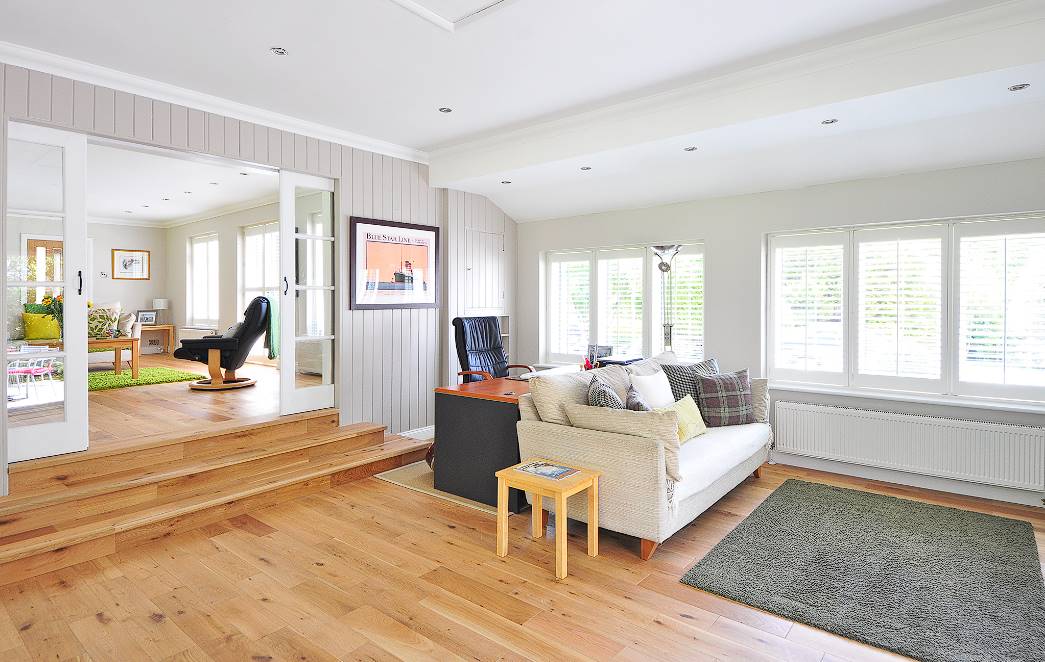
Things To Think About
Suspended ceilings, often known as fake ceilings, have many advantages. They allow for better soundproofing, easier utility access, and a more contemporary look. However, acoustic or dropped ceilings are superior in many ways, including their ability to dampen ambient noise, keep the heat in, and enable a wide range of lighting options. Therefore, it is important to be familiar with the fundamental distinctions between these two ceiling kinds to make the most informed decision possible.
However, picking between suspended and dropped ceilings is one of many considerations. Making the best choice depends on several factors, including installation difficulty, maintenance needs, financial constraints, and the requirements of your space. So, let's not waste any more time; instead, let's go into the realm of suspended and dropped ceilings to find out which is best for you. There are things to think about while deciding between suspended and dropped ceilings:
Installation
Installing ceiling tiles in a suspended ceiling is often more involved and calls for a grid system. In contrast, panels for dropped ceilings are typically installed directly onto the existing ceiling surface. Think about how long it will take you to set up and how intricate of a system you are comfortable with.
Aesthetics
Think about the atmosphere you want to create in the room. For example, suspended ceilings give a room a more formal and sophisticated look, while dropped ceilings can make it feel warmer and more relaxed. Think about the feel and look you'd like to go for.
Accessibility
Suspended ceilings are preferable if it is necessary to reach utilities or the space above the ceiling. They can be uninstalled and reinstalled quickly, allowing for simple access during service or repair. Accessibility issues caused by dropped ceilings may necessitate demolition work.
Acoustic considerations
Whether suspended or lowered, ceilings can help with acoustics by dampening ambient noise. However, the air space between the ceiling tiles of a suspended ceiling provides superior sound absorption. Think about how much noise reduction is needed.
Cost
Check how much money you'll need for your project. Due to the materials' nature and the installation process's difficulty, suspended ceilings are typically more expensive. For smaller rooms or tighter budgets, dropped ceilings are typically the best option.
Ceiling height
Take the room's ceiling height into account. Suspended ceilings may be preferable to drop ceilings if ceiling height is a concern because they can be put at a lower level. On the other hand, there could be much less headroom if the ceilings have been dropped.
Maintenance
Consider how simple it is to clean and repair. Because ceiling tiles may be removed and replaced one at a time, suspended ceilings are more convenient to maintain. Since the panels in a dropped ceiling are often installed permanently, regular maintenance may be more of a hassle. It would be best to weigh these considerations in light of your unique requirements and interests before deciding between suspended and dropped ceilings.
Conclusion
This article will compare and contrast suspended and dropped ceilings to help you make a well-informed selection for your next construction project. Suspended ceilings are created by suspending a grid of metal tracks from the preexisting ceiling, while dropped ceilings are created by installing a grid structure at a lower level. Both varieties have advantages and disadvantages, and this article will explore the differences between suspended and dropped ceilings so you can determine which type of ceiling is right for you. A suspended ceiling system is typically placed as a false ceiling below the main foundation, and is wired to the main ceiling above. Suspended ceilings are often used in public and private buildings, such as offices, classrooms, hospitals, and other medical facilities.
They have several advantages, such as aesthetics, soundproofing, thermal insulation, lighting options, accessibility, fire resistance, customization, and fire resistance. Suspended ceilings can be categorised in several ways, depending on their intended purpose, materials used, and installation method. Joint suspended ceilings have a finished appearance similar to that of a standard ceiling, while suspended shapes or an open framework allow open or decorative suspended ceilings to install lighting fixtures above or below the ceiling. Bandraster-style panelled suspended ceilings are more adaptable due to the mains and metal tees being cut to varied lengths and put in various ways. A dropped ceiling is a system of metal channels or tracks hanging from the existing ceiling in a grid pattern, holding panels consisting of mineral fibre, metal, or gypsum in place to create a false floor.
It provides many useful advantages, including aesthetics, easy access, acoustic improvement, thermal insulation, lighting and ventilation, and thermal insulation. There are several variations of dropped ceilings, such as Acoustic Tiles, Gypsum Board Drywall Ceilings, Metal Tiles, and Metal Ceilings. Metal ceiling tiles are commonly used in commercial and industrial environments due to their durability. Fibreglass tiles are lightweight, fireproof, and great for dampening background noise. PVC tiles are water resistant, durable, and easy to clean.
Wood panels can make a room feel cosier and more attractive. Suspended ceilings have many advantages, but acoustic or dropped ceilings are superior in many ways. To make the best choice, consider installation difficulty, maintenance needs, financial constraints, and the requirements of your space. The most important details to consider when deciding between suspended and dropped ceilings are accessibility, acoustics, cost, ceiling height, maintenance, and ceiling height. Suspended ceilings provide superior sound absorption, while dropped ceilings are more expensive and require more maintenance. It is important to weigh these considerations in light of your unique requirements and interests before making a decision.
Content Summary
- The article compares and contrasts suspended ceilings and dropped ceilings.
- Suspended ceilings are installed by hanging a grid of metal tracks from the existing ceiling, while dropped ceilings are installed at a lower point using a metal grid framework.
- Suspended ceilings are convenient for upkeep and repairs, while dropped ceilings have superior soundproofing and insulation capabilities.
- Suspended ceilings enhance the aesthetics of a room by concealing pipes, ducts, and wiring.
- They also provide acoustic insulation, reducing background noise and creating a more relaxing environment.
- Suspended ceilings improve thermal insulation, maintaining a consistent room temperature and reducing the need for heating or cooling.
- They offer flexibility in lighting options, allowing for recessed lights, track lighting, and suspended light panels.
- Suspended ceilings provide easy accessibility for maintenance and repairs of electrical and mechanical systems.
- They contribute to increased fire resistance, slowing down the spread of fire and smoke.
- Suspended ceilings offer a wide range of styles, textures, and colors for customization.
- Various types of suspended ceilings include joint suspended ceilings, open framework ceilings, and bandraster-style panelled ceilings.
- Dropped ceilings are supplementary ceilings installed below the primary structural ceiling.
- They hide services such as electrical wiring, plumbing pipes, and HVAC ductwork.
- Dropped ceilings are commonly used in public spaces due to their acoustic benefits.
- They improve room aesthetics by concealing infrastructure and lighting systems.
- Dropped ceilings allow for easy access to mechanical systems, electrical wiring, and plumbing through detachable tiles or panels.
- They significantly enhance room acoustics by increasing sound absorption and reducing noise transmission.
- The space between the regular ceiling and the dropped ceiling provides thermal insulation.
- Dropped ceilings enable better lighting and ventilation distribution.
- Varieties of dropped ceilings include acoustic tiles, gypsum board, metal tiles, fiberglass tiles, PVC tiles, and wood panels.
- Each type of dropped ceiling has its own advantages and disadvantages, suitable for specific uses and aesthetic preferences.
- Factors to consider when choosing between suspended and dropped ceilings include installation complexity, aesthetics, accessibility, acoustic considerations, cost, ceiling height, and maintenance.
- Suspended ceilings require a grid system for installation, while dropped ceilings are typically installed directly onto the existing ceiling surface.
- Suspended ceilings give a room a formal and sophisticated look, while dropped ceilings create a warmer and more relaxed atmosphere.
- Suspended ceilings allow for easy access to utilities and the space above the ceiling, while dropped ceilings may require demolition work for access.
- Both suspended and dropped ceilings contribute to acoustic improvement, but suspended ceilings with the air space between tiles provide superior sound absorption.
- Suspended ceilings are generally more expensive due to materials and installation complexity.
- Suspended ceilings can be placed at a lower level, making them suitable for rooms with ceiling height concerns.
- Suspended ceilings are easier to maintain as individual tiles can be removed and replaced, while dropped ceilings may require more extensive maintenance.
- The choice between suspended and dropped ceilings should be based on specific requirements and interests, considering factors such as installation, aesthetics, accessibility, acoustic needs, cost, ceiling height, and maintenance.
Frequently Asked Questions
Suspended ceilings offer several advantages over dropped ceilings. They provide easy access to the space above for maintenance and repairs, conceal electrical wiring and plumbing, improve acoustics by reducing noise levels, and enhance thermal insulation. In contrast, dropped ceilings are primarily used for aesthetic purposes and may not offer the same functional benefits.
Generally, suspended ceilings tend to be more cost-effective compared to dropped ceilings. Suspended ceilings utilize a metal grid system and lightweight panels, which are relatively affordable and easy to install. Dropped ceilings, on the other hand, often involve more intricate designs and may require additional materials and labor, making them more expensive.
While suspended and dropped ceilings can both be used in various settings, their suitability depends on the specific requirements of the space. Suspended ceilings are commonly used in commercial buildings, offices, and healthcare facilities due to their practical advantages. Dropped ceilings, with their decorative appeal, are often preferred in residential settings and areas where aesthetics play a significant role.
Both suspended and dropped ceilings have certain limitations. Suspended ceilings may reduce ceiling height, which could be a concern in spaces with low ceilings. Dropped ceilings, on the other hand, may have weight restrictions due to their independent structure. Additionally, both types of ceilings may require careful consideration of lighting fixtures and HVAC systems to ensure proper installation and functionality.
When it comes to soundproofing, suspended ceilings are generally more effective than dropped ceilings. Suspended ceilings with acoustic panels or tiles offer better sound absorption properties, reducing noise transmission between spaces. Dropped ceilings, although they can contribute to improving acoustics to some extent, are primarily focused on aesthetics and may not provide the same level of soundproofing capabilities.

